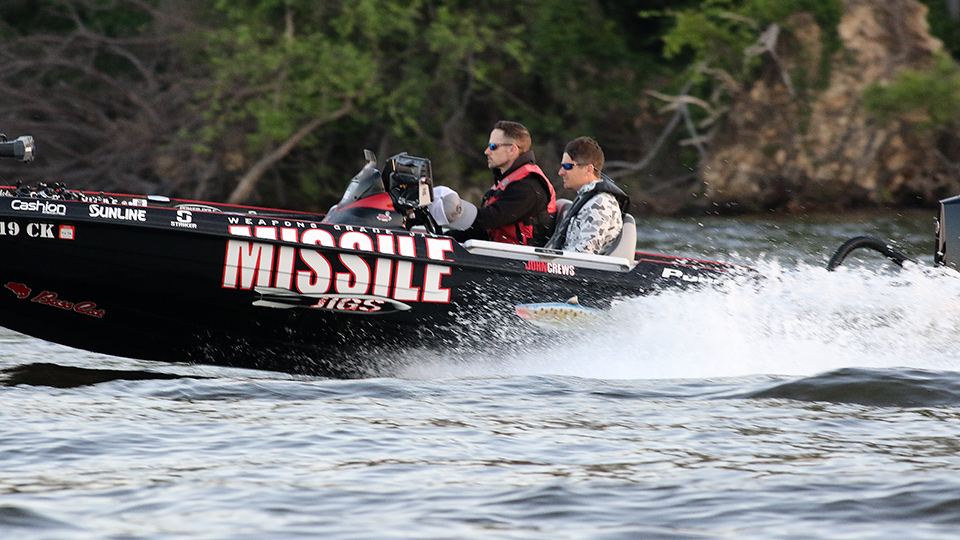
Being able to stay competitive on the Bassmaster Elite Series requires an angler to have a set of core competencies, but it also forces one to have the ability to learn new techniques to add to an angler’s repertoire.
Coming from Virgina and competing in the areas I did coming up, I had to be proficient with a jig and crankbaits. Of course, there are other things I’ve used my whole career, but I’ve added things as I progressed through the years.
One of those things I started working on a few years back was incorporating a swimbait into my tournament plans. I’ve seen anglers on the Elite Series use them to their advantage for years, and I wanted to figure out how to take advantage of their effectiveness.
Like many anglers, I read and heard about swimbaits, but until Byron Velvick won a Bassmaster Invitational at Clear Lake in 2000 on a big bait, I thought of the baits as solely as a trophy-hunting approach that were inefficient in tournaments. Then Steve Kennedy won an Elite at Clear Lake in 2007, Velvick again in 2010 and then Skeet Reese won at Smith Mountain Lake in Virginia on a swimbait. I knew I needed to get on board. After those wins and others on national stages, swimbaits went from niche baits to more mainstream.
I’ve played with them and studied them and inserted them in events here and there. When Missile Baits’ National Sales Manager Byron Childers got heavily involved with the category several years ago in and around Tennessee, I really started working on them.
I’ve studied the different styles and have figured out there are two styles of baits that are tailor made for tournament applications — the hard glide bait and soft plastic boot tail styles — all in the 5-inch to 7-inch size range. The glide baits can start out at around $30 for the mass produced, hard plastic versions and cost as much as several hundred dollars for the small batch, custom shop pieces. We’ve partnered with some of those shops at Missile Baits and done some custom Big Bait Drops. The hardcore Big Bait guys swoop them up.
For most anglers getting started in the swimbait category, that means the soft plastic boot tail types are the best place to start. So, I’ll share with you what I put together to have a versatile setup and the types of retrieves I use that allow me to appeal to swimbait eating fish on tour.
Let’s touch on equipment. Your rod needs to be something that can handle casting the baits and the fish that strike. I use a medium-heavy, moderate fast action 7-foot, 10-inch Cashion Icon John Crews Big Bait rod that will not only throw swimbaits, but I can multipurpose it with oversized crankbaits, big spinnerbaits offshore, A-Rigs, etc. I match that with a Daiwa Zillion TW HD 200 reel in the 7.3:1 gear ratio. I spool that with 16- to 20-pound test Sunline Shooter Fluorocarbon line.
I’ve spent the past year working with SPRO to build my 6-inch Megalojohn soft plastic boot tail swimbait. It has a very soft body, great tail action and a lot of body wobble that makes it a great bait for throwing most of the time in tournaments. At $12.99 it’s a bait you’ll feel comfortable using to learn.
The thing to remember about swimbaits is they trigger a completely different type of reaction from bass. Throw a standard lure in there, something 3 to 4 inches, and a fish won’t respond. Turn around and throw a 5- to 7-inch swimbait and you’ll see fish react with aggression you never thought possible.
The best thing to do when learning is to keep your retrieve at a steady, medium pace and try to focus on where you retrieve the lure. Look for transition zones from rock to sand or those that transition from one type of cover to another. Try throwing them across points or next to docks and laydowns.
Swimbaits are more similar to jerkbaits in that they draw bass to them, so don’t be surprised to see bass begin following your lure trying to gauge it. Once you start seeing those types of reactions, you can start playing with your retrieve to see if you can turn those fish into biters.
The best piece of advice I can give you is to stick with it; don’t get discouraged as it can take awhile to get completely comfortable with swimbaits. Also, while swimbaits are known as “clear water” baits, remember that visibility to a fish is relative to their depth. Swimbaits perform well in stained and dirty water as well, so keep throwing and see what happens.





